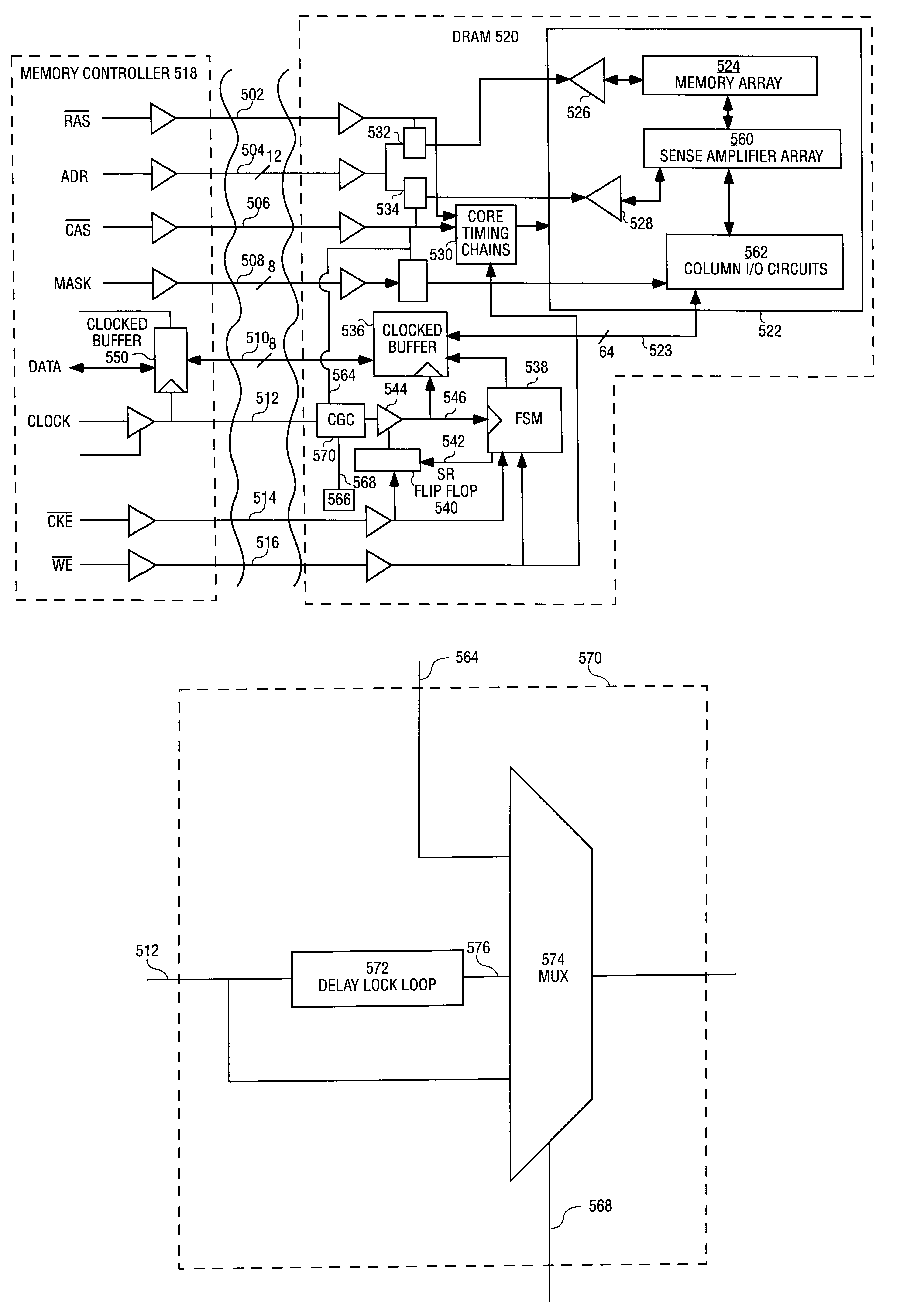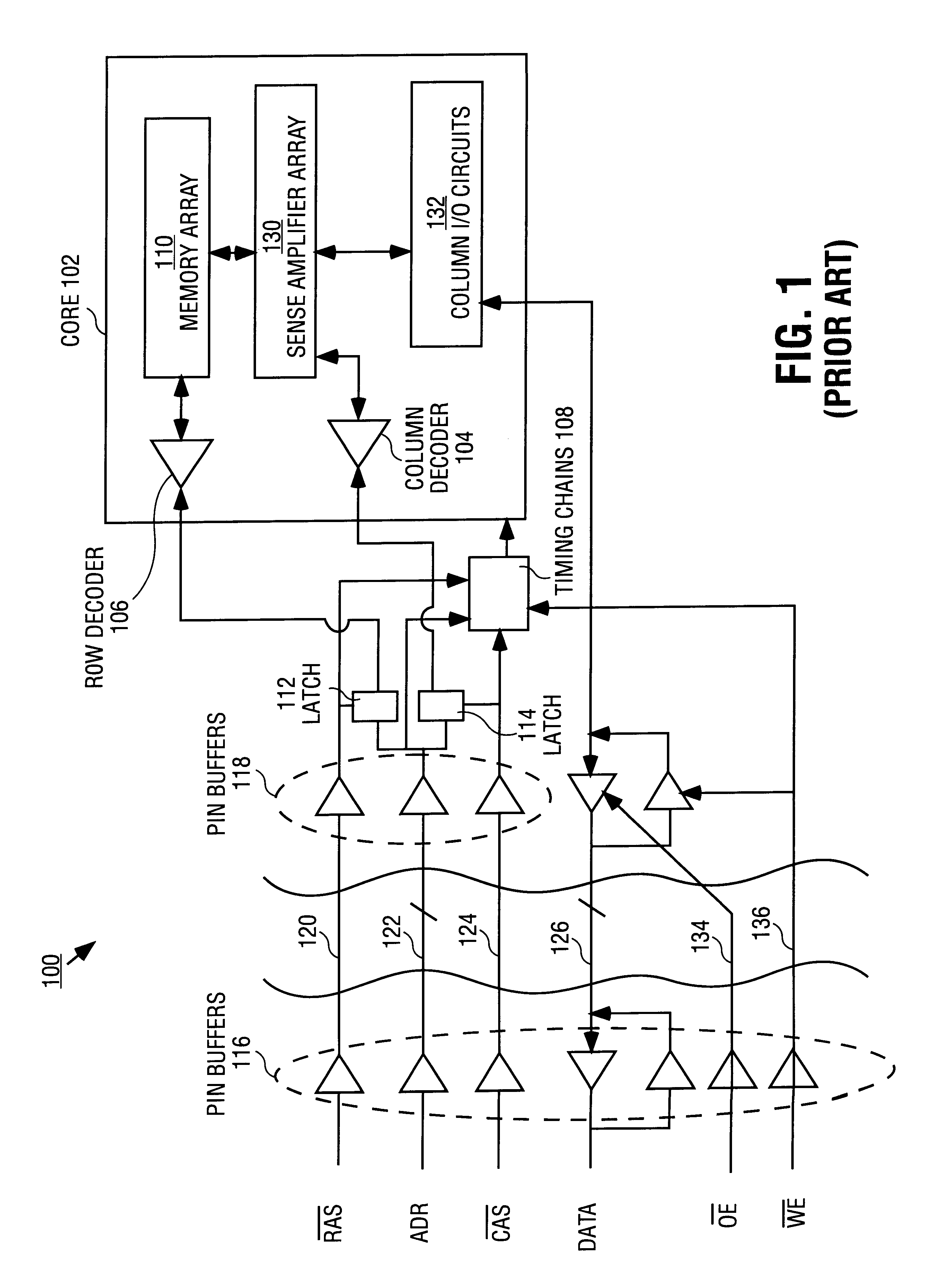Asynchronous request/synchronous data dynamic random access memory
- Summary
- Abstract
- Description
- Claims
- Application Information
AI Technical Summary
Benefits of technology
Problems solved by technology
Method used
Image
Examples
Embodiment Construction
In the embodiment illustrated in FIG. 5a, the throughput is maximized by providing separate lines for each type of signal so that the signals which are separated can function simultaneously. However, as a general rule, the higher the number of lines required by a memory system, the more expensive it is to manufacture the components for the memory system. Therefore, the approach shown in FIG. 5a may not be optimal when the cost of manufacturing is taken into account. In an alternative embodiment to that shown in FIG. 5a, the number of lines is reduced by multiplexing some of the lines to allow the same lines to carry more than one type of signal.
According to an alternative embodiment, the mask signal can be sent over the address bus 504, eliminating the need for mask lines 508. FIG. 9 is a timing diagram illustrating the timing of the signals generated during a write operation in such an embodiment. The timing proceeds in the same fashion as described above with reference to FIG. 7 w...
PUM
 Login to View More
Login to View More Abstract
Description
Claims
Application Information
 Login to View More
Login to View More - R&D
- Intellectual Property
- Life Sciences
- Materials
- Tech Scout
- Unparalleled Data Quality
- Higher Quality Content
- 60% Fewer Hallucinations
Browse by: Latest US Patents, China's latest patents, Technical Efficacy Thesaurus, Application Domain, Technology Topic, Popular Technical Reports.
© 2025 PatSnap. All rights reserved.Legal|Privacy policy|Modern Slavery Act Transparency Statement|Sitemap|About US| Contact US: help@patsnap.com



